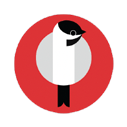The following excerpt is taken from Michelle Christy of Bird-Safe Campus, who is currently studying Environmental Science at uOttawa:
“The focus of the COVID-19 pandemic over the last 2 years has been—and rightfully so—the state of healthcare systems across the globe. But among all the negative effects that have come from COVID-19 and the subsequent restrictions, researchers at the University of Manitoba have taken an interest in potential positive impacts on the environment.
“With an exceptionally large decline in human movement across North America caused by COVID-19 restrictions, scientists have the unique opportunity to observe avian movement across the continent without the influence of human presence. Dubbed the “anthropause,” this brief period of time between March to May 2020 was constituted by an extraordinary decrease in vehicular traffic, decreased air pollution, and noise pollution.
“To test possible changes in bird responses, researchers conducted a study of 82 bird species from regions across both Canada and the United States, comparing their recorded abundances from before and during the first lockdown. Because bird populations tend to fluctuate naturally, abundances were observed in relation to 5 indicators of human activity: changes in traffic, migration overlap, distance to major roads, distance to international airports, and urban versus rural sites. These indicators allowed scientists to examine if these fluctuations in species abundance were the result of human-related factors or not. To ensure no bias due to regional variability, results were statistically controlled to account for differences between indicators at different locations.
“The study found that, after more than four million observations of individual birds, 80% of species showed a change in relationship with at least one of the aforementioned indicators during the 2020 period, with many birds using urban areas much more than prior to the pandemic. These changes included both increases and decreases in relative abundances. However, when considering all 5 indicators, species were 14 times more likely to increase rather than decrease. This discovery that decreased human activity does not always positively affect avian activity is important, as it sheds light on the behavioural adaptations enabled in certain species that allow them to benefit from certain anthropogenic activities.
“A proposed hypothesis for these effects includes the decreased noise and air pollution and altered species interactions that accompanied the decline in human activity. Further research is necessary to identify the specific mechanisms that occurred within this period, especially difficult to explain phenomena such as those species that suffered from lowered human presence. Some suggested reasons for this include increased roadkill for scavenging birds or the displacement of predators and competitors of the studied species. By continuing research on this topic, more can be understood about how these human-populated regions act as functional habitats for wildlife.
“This particular study provides essential insight into humans’ large impacts on the ecosystems that surround both urban and rural areas. The observed results show clear and large effects on bird activity, which was only measured over these 3 months of reduced activity. By continuing this kind of research, we can learn how other human activity indicators can affect a variety of animals, especially when it comes to reducing human activities that we consider an essential part of our daily lives. This can allow us to alter our behaviour in ways that can highly benefit a multitude of avian species.”




